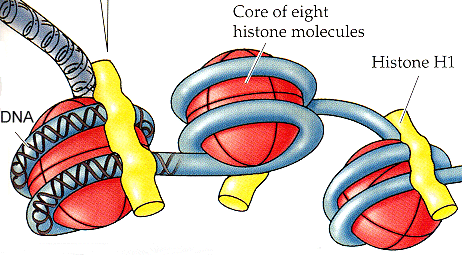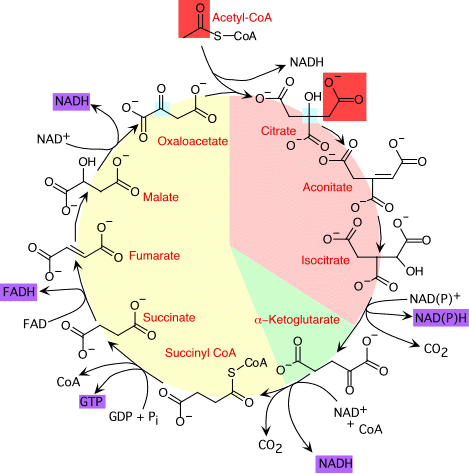Cruciferous vegetables like broccoli, cabbage, kale, and Brussels sprouts contain natural components named GLUCOSINOLATES. These molecules are involved in plants defence against pests and deseases, but they are also associated with a reduced incidence of cancer. Young broccoli plants are an especially good source of chemoprotective glucosinolates, with levels 20–50 times those found in mature market-stage plants.

Every glucosinolate contains a central carbon atom, which is bound via a sulfur atom to the thioglucose group and via a nitrogen atom to a sulfate group. In addition, the central carbon is bound to a side group; different glucosinolates have different side groups, and it is variation in the side group that is responsible for the variation in the biological activities of these plant compounds.
This is a glucosinolate's structure:

In the cruciferous vegetables we find a specific type of glucosinate, which is namend glucoraphanin molecule undergoes hydrolysis by myrosinase , an enzyme that coexists with glucosinolates in Cruciferae and that is released when the plant’s cell structure has been disrupted through chewing, chopping, or digestion. This reaction converts glucoraphanin in SULPHORAPHANE , a molecule within the isothiocyanate group.

This conversion is also possible thanks to the activity of myrosinase of human enteric microflora: once generated, isothiocyanates are absorbed and metabolized by sequential enzymatic reactions, the first of which is conjugation with glutathione. In this report the glutathione adduct and subsequent metabolites are collectively termed dithiocarbamates. These compounds are a sensitive indicator of crucifer consumption, infact collective results from dozens of volunteers maintained on diets devoid of glucosinolates or isothiocyanates indicate there are no endogenous sources of dithiocarbamates.
EFFECTS ON THE HUMAN BODY
Antitumor properties of sulforaphane consist in a lot of molecular functions in human body: these functions have been discovered through studies during past years.
1) Inhibition of bladder cancer
Cancer of the urinary bladder is the fifth most common neoplasm in the United States and presents a significant health care burden as the most expensive cancer to treat and monitor per patient, with an annual cost of $3.7 billion; tobacco smoking is the most important risk factor of this cancer.
Sulpforaphane reduces the viability of cancer cells: this observation is associated with many phenomenons:
1. dose-dependent accumulation of cells in the G2/M phase
2. dose-dependent increase in caspase 3/7 activity and the cleavage of their important target, PARP, indicating the activation of apoptotic cascades
3.down-regulation of ErbB family receptor kinases, EGFR and Her2/neu: they are shown to be overexpressed in urothelial tumors and their degree of expression is also associated with cancer progression and poor prognosis
4. dose-dependent decrease in survivin expression, an important anti-apoptotic protein and a predictor of bladder cancer disease progression.

Inhibition of Bladder Cancer by Broccoli Isothiocyanates Sulforaphane and Erucin: Characterization, Metabolism and Interconversion. 2013
2) Prevention cell death and inflammation in nephropathy
Cisplatin is a potent and widely used chemotherapeutic agent to treat various malignancies, but its therapeutic use is limited because of the dose-dependent nephrotoxicity.

Cisplatin-induced nephropathy is associated with activation of various cell death and pro-inflammatory pathways (p53, JNK, p38-α, TNF-α, and NF-κB) and impairments of key pro-survival signaling mechanisms (ERK and p38-β). Sulforophane is able to prevent the CIS-induced renal injury by modulating these pathways, infact:
1. it attenuates the CIS-induced increased expression of the pro-apoptotic p38-α in the kidneys, while prevents the abolished expression of the anti-apoptotic p38-β (p38-β is anti-apoptotic, p38-α promotes cell death)
2. it attenuates the increased activation of p53
3. it attenuates the increase of infiltration of leukocytes and macrophages within 72 hours in damaged renal tissues, as well as the expression of adhesion molecules (ICAM-1,VCAM-1)
Sulforaphane, a natural constituent of broccoli, prevents cell death and inflammation in nephropathy. 2013
3) Inhibition of histone deacetylase (HDAC)
HDAC inhibitors are interesting candidates for prevention because they enable re-expression of epigenetically-silenced genes involved in differentiation, cell cycle regulation, apoptosis, angiogenesis, invasion, and metastasis; HDAC changes have been linked to the progression of several cancers, including prostate cancer.

Sulforophane increases histone acetylation (like some drugs) and deactivates the repressor of genes such as p21 (which arrests cell in G1 phase) and Bax (pro-apoptotic protein): so, it leads to cancer prevention via cell cycle arrest and apoptosis.
Sulforaphane Retards the Growth of Human PC-3 Xenografts and Inhibits HDAC Activity in Human Subjects. 2008
4) Modulation of plasma metabolites
In 2013, some researchers analysed SNPs (Single Nucleotide Polymorphism) of may volunteers and they identified genetic polymorphisms associated with the PAPOLG gene: researchers divided people in two groups according to SNPs, “genotype 1” and “genotype 2”. PAPOLG is a poorly characterized gene that is likely to be a member of the poly(A) polymerase family, which catalyses template-independent extension of the 3′ end of a DNA/RNA strand.
Fifty metabolites were higher in genotype 2, phenomenon associated only with PAPOLG genotype: this metabolites were lipids and amino acids, but also the cofactor Flavin Adenine Dinucleotide (FAD). FAD modulates the activity of lysine-specific demethylase-1 (LSD1), which, through epigenetic regulation, fine tunes the expression of genes associated with mitochondrial metabolism and energy expenditure: so, when FAD levels are relatively high, there is down-regulation of expression of genes in mitochondrial respiration and enhanced export of citrate from the tricarboxylic acid cycle cycle (Krebs cycle), which results in elevated concentrations of fatty acids, lysolipids, and steroids.

This fact may also lead to dysfunctional integration of fatty acid β oxidation with the TCA cycle: for maintenance its activity, cataplerotic reactions need to be balanced by anaplerotic reactions that provide replacement the cycle intermediates. if this not happen, the levels of plasma acylcarnitines increase.
The occurrence of acylcarnitines in the plasma and urine has been associated with an inflammatory phenotype and as a risk factor for kidney cancer.
The dietary intervention enhanced the difference in the level of FAD between the two genotypes. As a consequence, the differences in the concentrations of lipid and amino acid metabolites observed before the study were either eliminated or reversed. In addition, the significant discordance in concentrations of succinate, fumarate, and malate which were found between the two genotypes, it was eliminated after the dietary intervention. Thus, the overall effect of the intervention appeared to be a normalization of TCA cycle intermediates and metabolism.
A diet rich in high-glucoraphanin broccoli interacts with genotype to reduce discordance in plasma metabolite profiles by modulating mitochondrial function. 2013
CONCLUSIONS
It’s very important to eat Brassicaceae (or Cruciferae) vegetables because they prevent, and in some cases they arrest, cancer or inflammatory deseas which are increasing all over the world because of incresead life expectancy.